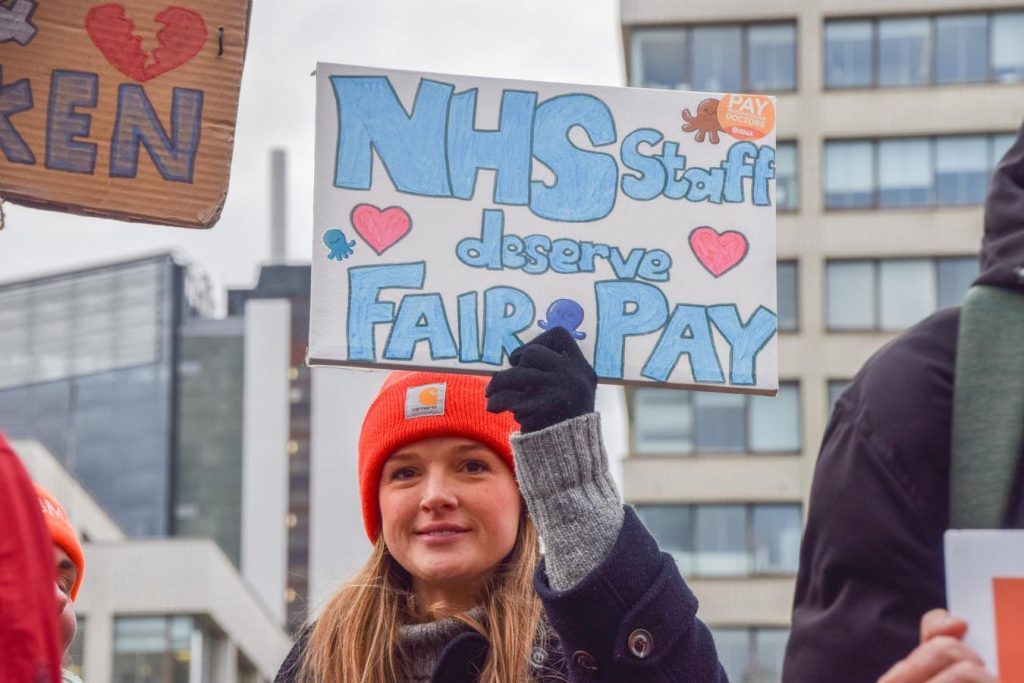After almost a year of industrial action, junior doctors in the U.K.’s National Health Service have started mediated talks with the government in an effort to end a series of disputes that have cost billions of pounds and delayed millions of hospital appointments. Several key groups of staff in the NHS have been striking periodically since December 2022, with England’s junior doctors starting their walkouts in July 2023. These doctors, who have up to eight years’ hospital experience, are seeking better pay and working conditions, similar to their counterparts in Wales and Northern Ireland who are also involved in industrial action.
The junior doctors are represented by the British Medical Association, and their committee co-chairs have stated that they have been “exploring various avenues” to address declining pay for more than a year. The talks with the government collapsed in December, leading to the decision to bring in an external mediator to facilitate the new round of negotiations. The mediation process is expected to last around a month, with hopes of reaching a credible solution as soon as possible. It is believed that an independent mediator can help break the logjam and restore trust between the parties involved, leading to a resolution to the ongoing disputes.
The NHS staff, including nurses, ambulance staff, senior doctors, and others, have been striking for over a year in an effort to secure better pay and working conditions. They argue that their compensation has not kept up with inflation, leaving them underpaid during a challenging time for the health system. The public health system is facing large waiting lists for planned care and high demand for urgent and emergency care. A lack of social care capacity has made it difficult for hospitals to discharge frail patients, leading to overcrowding in emergency departments and lengthy handover delays. The striking workers warn that they are needed more than ever to keep patients safe in busy hospitals.
While the NHS staff demand increased pay to attract and retain a healthy workforce, the government argues that their demands are unaffordable. For example, junior doctors asked for a pay rise of 35%, following years of below-inflation salary growth. Last year, the government provided an average rise of just under 9%. U.K. health and social care secretary Victoria Atkins expressed her commitment to resolving the dispute with the BMA junior doctors committee in order to ensure the delivery of high-quality care and address progress on waiting lists. She welcomed the decision to explore mediation and expressed hope that it will provide a way forward in finding a resolution to the ongoing conflicts.
The industrial action within the NHS has been ongoing for more than 16 months, with staff across the health system advocating for better pay and working conditions. The striking workers play a crucial role in maintaining patient safety in busy hospitals, especially during a time of increased demand on already-overstretched services. With the aging population expected to contribute to further strain on the health system, unions argue that increasing pay is essential to retain a healthy workforce. The ongoing disputes highlight the complex challenges facing the NHS and the need for a sustainable solution to ensure the delivery of high-quality care to patients.
As negotiations between the junior doctors and the government continue with the assistance of an external mediator, there is hope that a resolution can be reached to bring an end to the industrial action that has disrupted the NHS for over a year. Both parties are committed to finding a credible solution to address the declining pay for junior doctors and other NHS staff, in order to ensure the delivery of high-quality care to patients and address the challenges facing the public health system. The outcome of the mediated talks will be crucial in determining the future working conditions and compensation for NHS staff, as they continue to play a vital role in providing healthcare services to the U.K. population.


